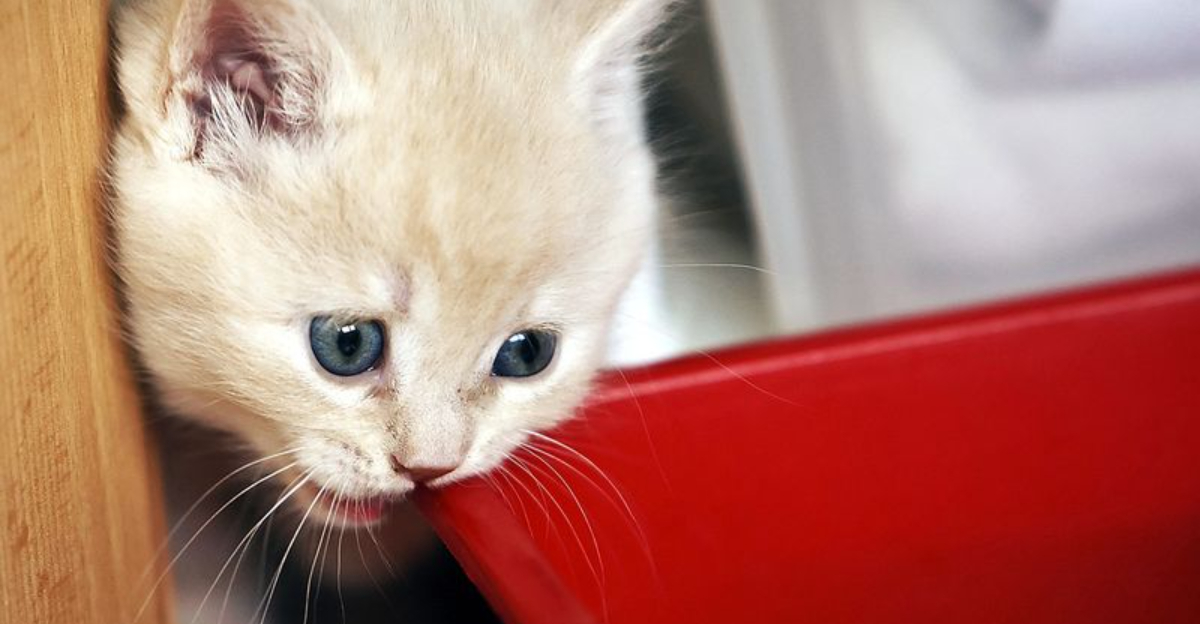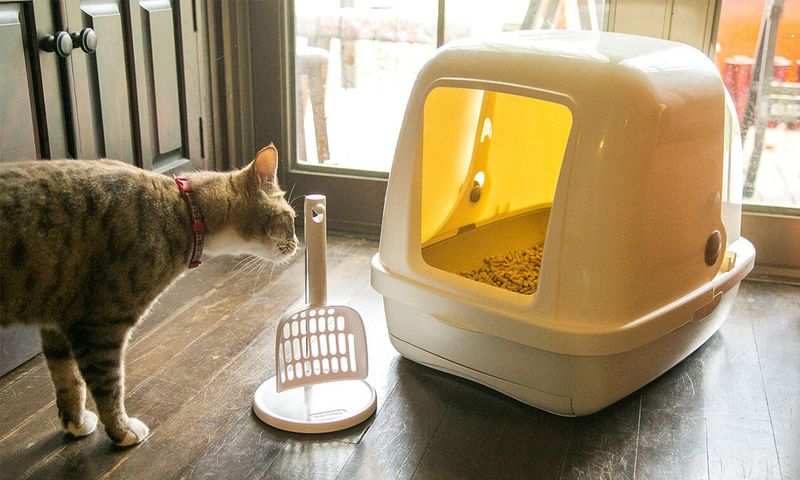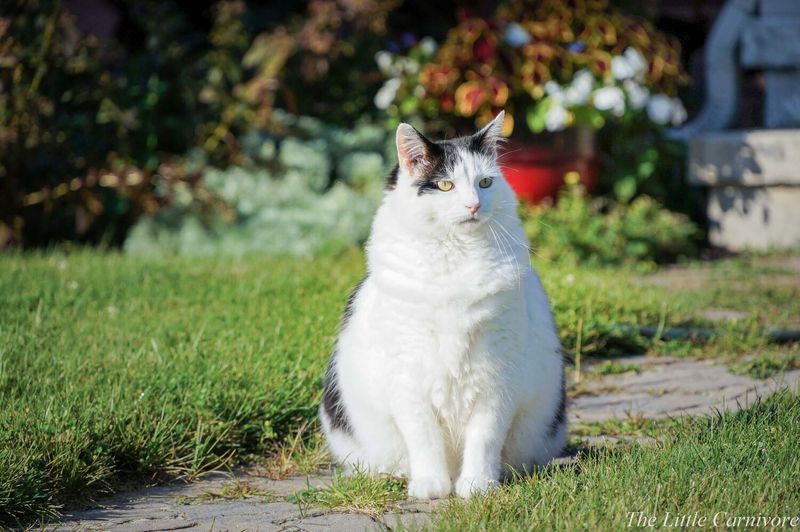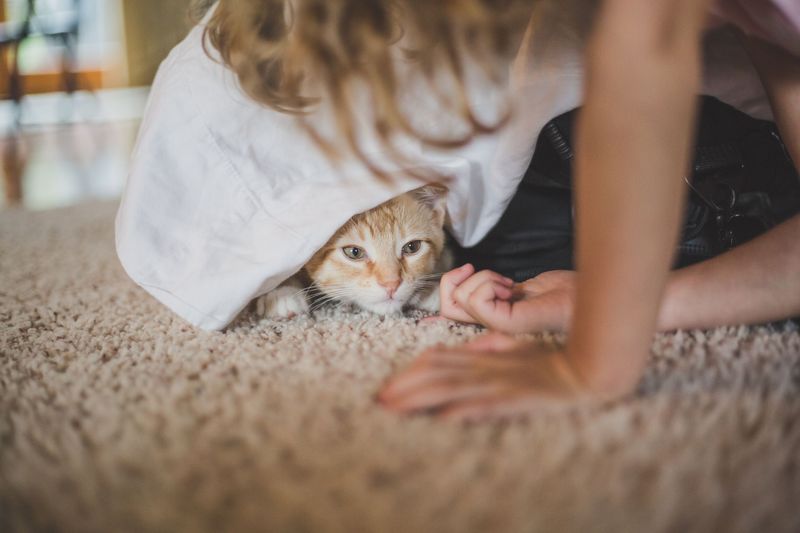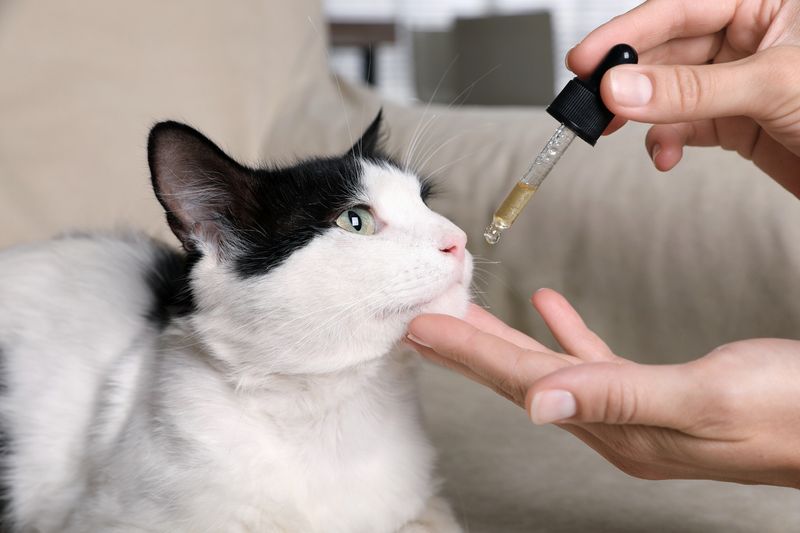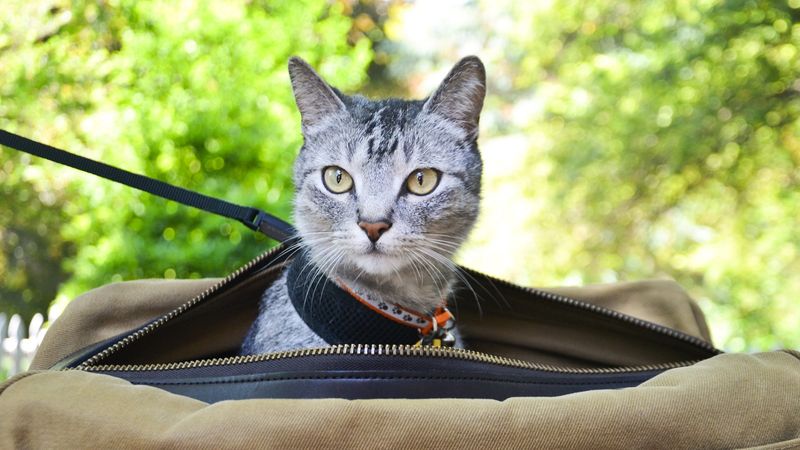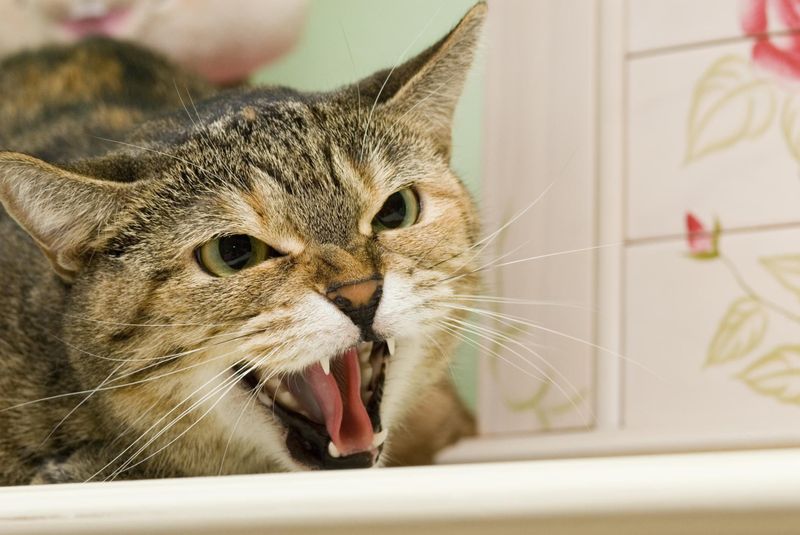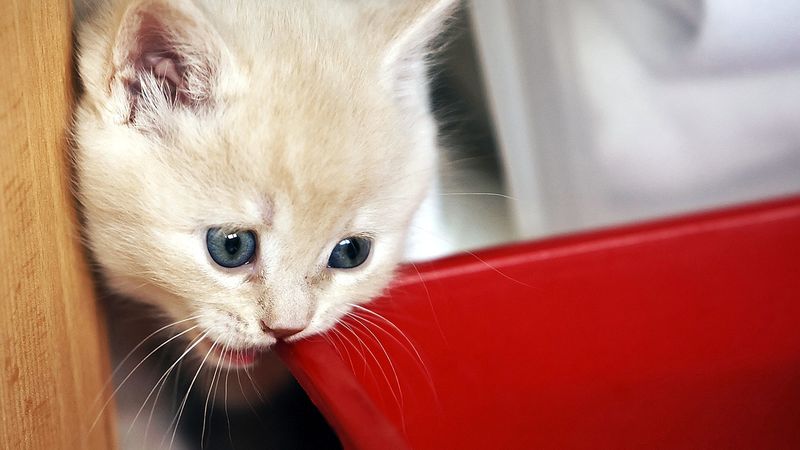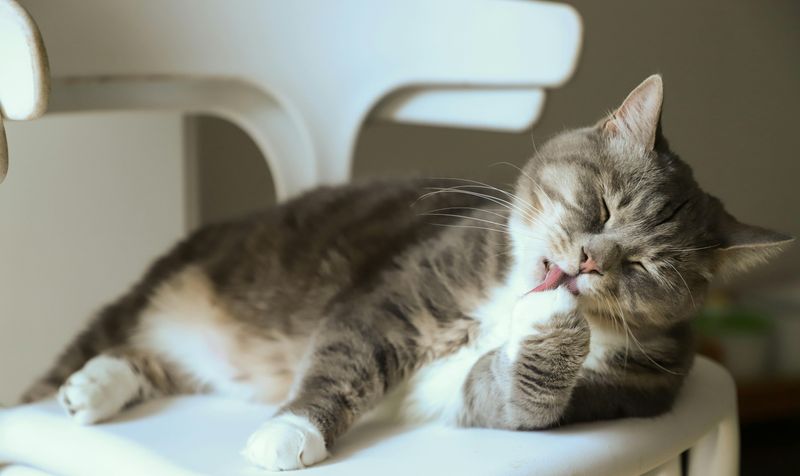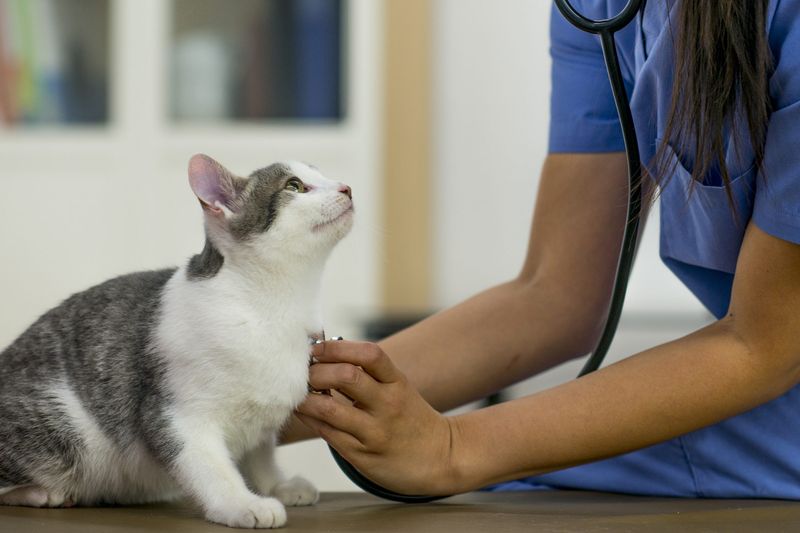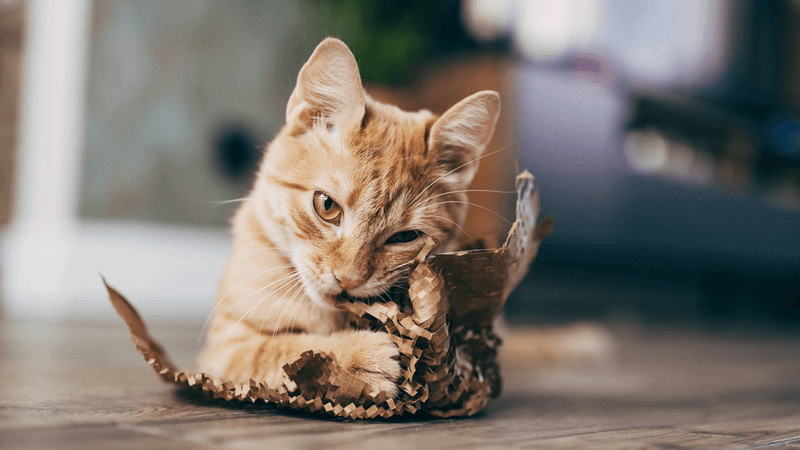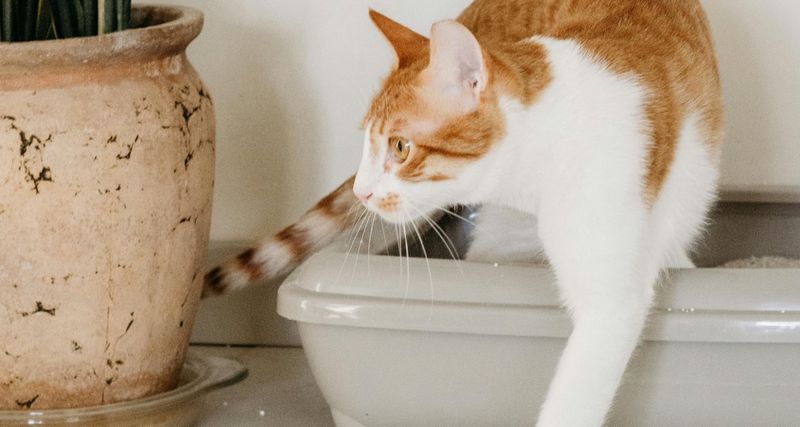📖 Table of Content:
- 1. Shedding and Hairballs
- 2. Scratching Furniture
- 3. Litter Box Odor
- 4. Nocturnal Activity
- 5. Picky Eating Habits
- 6. Allergies and Sensitivities
- 7. Overweight and Obesity
- 8. Fear of Strangers
- 9. Medication Administration
- 10. Travel Stress
- 11. Territorial Aggression
- 12. Destructive Chewing
- 13. Separation Anxiety
- 14. Spraying and Marking
- 15. Health Emergencies
- 16. Escaping or Door-Dashing
- 17. Sudden Bouts of Zoomies at Inconvenient Times
- 18. Refusing to Use a New Litter Box or Litter Type
Owning a cat offers both rewards and hurdles that shape the experience. From the energy of a playful kitten to the calm of an older cat, each stage brings its own set of dynamics. While cats can bring immense joy, they also introduce challenges that require a bit of patience and understanding.
Living with a cat means adapting to their unique behaviors and needs. Some challenges can be predictable, like their need for attention, while others may take owners by surprise. Navigating these hurdles with care and knowledge ensures that both you and your feline companion thrive together.
With the right guidance, the challenges of cat ownership can become manageable and even enjoyable. By recognizing common obstacles and knowing how to approach them, the bond with a cat can deepen. This journey, though filled with occasional difficulties, brings rich rewards that make the experience worthwhile.
1. Shedding and Hairballs
Cats often shed a lot of fur, which can result in hairballs. Regular grooming helps reduce shedding and the occurrence of hairballs. Use a cat brush to comb through your cat’s coat gently. This not only minimizes fur around the house but also strengthens your bond. Ensure your cat’s diet includes sufficient fiber to aid digestion and reduce hairball formation.
Providing plenty of water also assists in passing hair naturally. Regularly vacuuming your home can help keep the environment clean. Finally, consider specialized hairball control cat food to further reduce this issue.
2. Scratching Furniture
Create a designated space for your cat’s scratching needs with posts placed near the areas they like to scratch. Different textures and angles will appeal to your cat’s preferences, encouraging them to use the posts instead of furniture.
Reward your cat with treats when they use the post. Cover furniture with protective materials, like slipcovers or double-sided tape, to deter scratching. Regularly trim your cat’s nails to minimize damage. Providing plenty of playtime can also reduce destructive behaviors. Consistency and patience are key to modifying this behavior successfully.
3. Litter Box Odor
Consistent upkeep of the litter box is essential for a clean home. Daily scooping and weekly litter changes will help keep everything in order. Opt for clumping, odor-control litter and place the box in a well-ventilated area for even better odor management.
Consider using baking soda in the litter to absorb odors naturally. Ensure the box is adequately sized for your cat’s comfort. A clean box encourages consistent use, reducing accidents outside the litter area.
4. Nocturnal Activity
Due to their nocturnal tendencies, cats often disrupt sleep. To prevent this, engage them in active play sessions before bed to expend energy. Pairing this with a consistent feeding schedule and providing a separate sleeping area can help create a quieter night for both of you.
Use blackout curtains to minimize light and encourage rest. If the behavior persists, gradually adjust feeding times to help reset their internal clock. Patience and consistency can help manage this challenge effectively.
5. Picky Eating Habits
When cats are picky about their food, it can lead to nutritional imbalances. Introduce new foods gradually to avoid rejection and consider mixing wet and dry food for variety. Pay attention to their weight and health, and ensure the feeding area stays clean to encourage eating.
If your cat refuses food, try warming it slightly to enhance aroma and flavor. Consult a vet if eating issues persist, as it may indicate underlying health problems. Experimenting with different textures and flavors can help find what your cat prefers.
6. Allergies and Sensitivities
Cats can develop allergies to food, pollen, or dust. Identify and avoid allergens by observing your cat’s reactions. If food allergies are suspected, try an elimination diet under veterinary guidance. Maintain a clean home environment by vacuuming and using air purifiers. Consult a vet for allergy testing and appropriate treatments, such as antihistamines or hypoallergenic diets.
Monitoring your cat’s health and behavior helps in identifying triggers. Offering an allergen-free space can significantly enhance your cat’s comfort and well-being. Proactive management is vital in reducing allergic reactions.
7. Overweight and Obesity
Excess weight in cats can cause various health concerns. Offering portion-controlled meals and a balanced diet is essential to keep them healthy. Encourage physical activity through toys and playtime, helping your cat stay active and prevent obesity.
Regular vet check-ups can monitor their weight and overall health. Avoid overfeeding and limit treats to maintain a healthy weight. Encouraging an active lifestyle is key to preventing obesity. A healthy cat is a happy cat, with improved energy levels and longevity.
8. Fear of Strangers
Cats may become anxious around strangers. Creating a safe space, like a cozy bed or hiding spot, helps them feel secure. Gradually introduce new people and environments to reduce stress. Encourage gentle interactions using treats and toys. Never force your cat to interact if they’re uncomfortable. Allow them to approach in their own time.
Consistent positive experiences can build confidence over time. Understanding your cat’s body language aids in managing this fear effectively. Reassurance and patience are essential in helping your cat overcome social anxiety.
9. Medication Administration
Giving cats medication can be challenging. Use a calm approach to reduce stress. Pill pockets or flavored pastes can hide medication, making it more palatable. If using liquid medicine, gently hold your cat and administer it with a syringe.
Reward them with treats afterward to create a positive association. Consult your vet for tips; sometimes, compounding medication into a flavored form helps. Practice patience and persistence, as successful administration may take time. Developing a routine and using positive reinforcement are key strategies to manage this task.
10. Travel Stress
Traveling can be stressful for cats. Acclimate them to their carrier by leaving it open and accessible at home. Use familiar bedding and toys inside to create comfort. Gradually introduce short car rides to build tolerance. Ensure the carrier is secure and seat-belted during travel.
Playing calming music or using pheromone sprays can soothe anxiety. Avoid feeding your cat right before travel to prevent motion sickness. Regular breaks for long journeys allow your cat to stretch and relax. Patience and preparation make traveling with your cat more manageable.
11. Territorial Aggression
When introducing new pets, territorial aggression can arise in cats. To minimize conflict, separate feeding areas and slow introductions are essential. Providing abundant resources, such as litter boxes and scratching posts, helps prevent competition and keeps your cats calm.
Engage your cats in joint play sessions to foster positive interactions. If aggression persists, consult a behaviorist for tailored strategies. Managing territorial behavior requires patience and a proactive approach to ensure harmony in multi-cat households.
12. Destructive Chewing
Although chewing is a natural instinct for cats, it can cause damage to furniture and other belongings. Provide designated chew toys to satisfy their need and protect vulnerable items, such as cords and plants. Use deterrents like sprays to discourage unwanted chewing behaviors.
Always supervise your cat in environments with potential hazards. Encouraging healthy chewing habits fosters a safer, more enjoyable home for both you and your pet. Consistency and vigilance are key in managing this behavior.
13. Separation Anxiety
Leaving a cat alone can trigger anxiety, but a stimulating environment can ease the transition. Ensure they have toys, perches, and interactive puzzles to keep them engaged. Gradual separation training and comforting items with your scent can provide emotional support.
Consistent departures and arrivals reduce anxiety, as your cat learns to anticipate your return. Consult a vet if anxiety becomes severe, as they may recommend behavioral therapy. Building a positive routine can help alleviate separation-related stress.
14. Spraying and Marking
Spraying is a communication tool for cats but can be problematic indoors. Ensure your cat is spayed or neutered to reduce marking behavior. Clean soiled areas with enzymatic cleaners to eliminate scent trails. Provide adequate resources, such as litter boxes, to prevent territorial disputes. Stress reduction through pheromone diffusers can also minimize spraying.
Observe your cat’s behavior to identify triggers, adjusting their environment as needed. Consistent litter box maintenance encourages proper use. If spraying persists, consult a vet to rule out medical issues. Patience and persistence are crucial in managing this behavior.
15. Health Emergencies
When it comes to health emergencies, being prepared can make all the difference. Familiarize yourself with emergency clinic locations and contact details for quick access. Routine vet visits are essential for catching potential health issues before they escalate. Keep a first aid kit on hand and know basic emergency procedures like CPR to assist your cat in times of need.
Recognizing signs of distress, such as lethargy or vomiting, enables quick action. Establishing a relationship with a vet ensures guidance during crises. Being prepared and informed can save your cat’s life during unexpected health incidents.
16. Escaping or Door-Dashing
Every cat owner knows that heart-stopping moment when your indoor kitty makes a break for the great outdoors. Cats are naturally curious and surprisingly quick when they spot an open door. Many indoor cats view the outside world as an exciting frontier to explore, regardless of the dangers lurking there.
Creating a “safety zone” near entrances can help prevent escapes. Try placing double barriers like baby gates or setting up a small enclosed area between your main door and the outside. Some owners find success with clicker training, teaching their cats to stay back when doors open. For persistent escape artists, consider installing high shelves or cat trees near doors to redirect their attention upward instead of outward. Remember that microchipping and ID tags are essential safety measures for all cats, just in case your clever feline does manage a temporary jailbreak.
17. Sudden Bouts of Zoomies at Inconvenient Times
Those random bursts of manic energy always seem to happen during important Zoom calls or at 3 AM when you’re trying to sleep. Cats store energy throughout the day, especially if they’re alone while you work, and release it in wild sprints around your home that can knock over everything in their path. Regular play sessions can work wonders for preventing inconvenient zoomies. Schedule 15-minute interactive play times morning and evening using wand toys that mimic prey movements. This helps your cat burn energy in a controlled way.
Creating a designated “zoom zone” with cat tunnels and climbing spaces gives your kitty somewhere appropriate to release energy. For nighttime zoomies, try a pre-bedtime play session followed by a small meal to trigger their natural hunt-eat-groom-sleep cycle, helping them settle down when you do.
18. Refusing to Use a New Litter Box or Litter Type
Cats are creatures of habit with strong opinions about their bathroom facilities. Changing anything about their litter setup can trigger protest behaviors like using your laundry basket instead! This frustrating problem often happens after moving, introducing a new box design, or switching litter brands. Gradual transitions work best when making litter changes. Mix new litter with old in increasing amounts over 7-10 days rather than switching all at once.
For new boxes, try placing them next to the old location before slowly moving to the desired spot. Some cats have texture preferences you’ll need to respect. Unscented, fine-grained litter often appeals to most cats. If accidents continue, a vet visit is wise to rule out urinary tract issues that might be causing discomfort. Remember that most cats prefer clean, spacious boxes in quiet locations away from their food.
